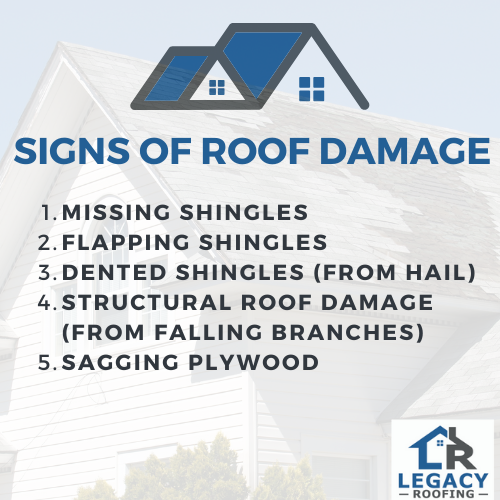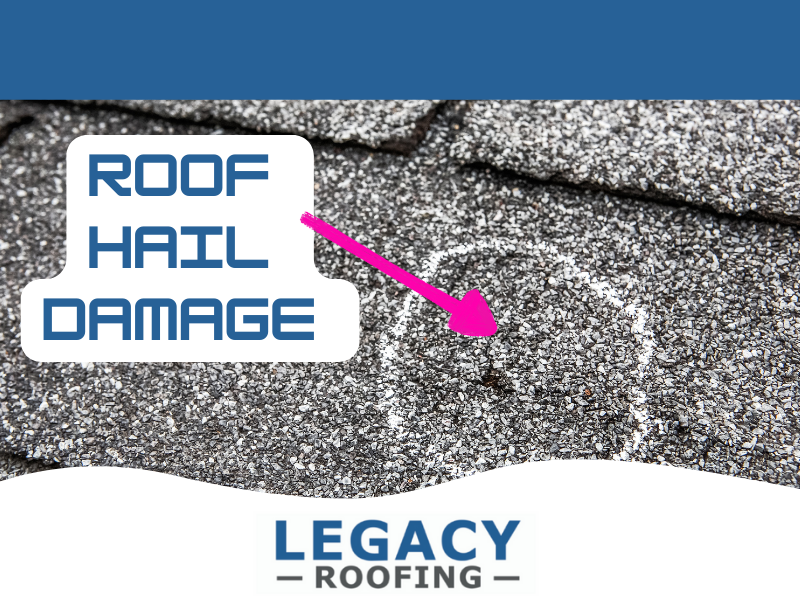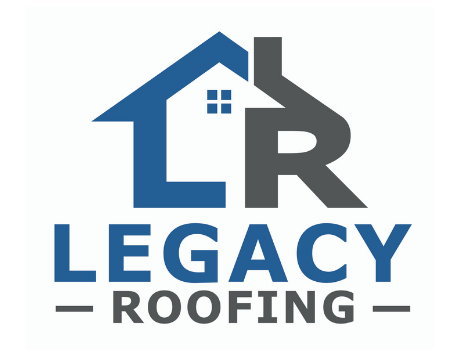Are you dealing with potential roof damage after a storm in the Treasure Valley? Some signs are apparent, while others might not be.
Throughout the year in the Treasure Valley, including areas like Boise, Middleton, Nampa, and Kuna, storms of all sorts touch down. While most homes remain unscathed, strong thunderstorms with hail and high winds, or even the occasional tornado, can leave us wondering if our homes were impacted.
When these types of storms occur, it’s crucial to answer the pivotal question: does my roof have storm damage? Today, Legacy Roofing of Idaho is here to share concrete methods to help you identify these issues quickly and effectively.
Quick List to Help You Identify Signs of Roof Damage:
When it comes to your roof, there are both noticeable and not-so-noticeable signs of damage. Here is a quick list of signs to always keep an eye out for, especially right after a storm:
- Missing shingles (#1 sign and easiest to spot)
- Apparent water damage (on ceilings, in bathrooms, or overflowing gutters)
- Asphalt shingles are losing granules
- Roofing debris in your yard or around your home
- Hail damage to gutters
- Appearance of large, sinking holes or soft spots
Use this quick list for a visual scan and to always keep a watchful eye on your roof. To fully understand why these signs are important, keep reading below.
Related: Roofing Warranty Info
5 Obvious Signs to Identify Roof Damage Fast After a Storm:

Some signs of roof damage are not always obvious (like internal leaks and attic damage). However, most storm-related roof damage is the byproduct of strong winds and starts with missing shingles. Luckily, most storm damage is a simple fix and doesn’t require extreme intervention unless its a downed tree on a roof or something like that.
Here are the top 5 storm damage signs to always stay vigilant of!
1. Missing Shingles
Missing shingles are a top and obvious sign of roof damage. Depending on the severity of the windstorm, you might lose 1-2 shingles or quite a few. In cases where many shingles are missing, insurance will often pay to replace them or even your entire roof. Whether you need a new roof or a roof repair, addressing missing shingles quickly is vital to preserving your roof’s integrity and preventing water damage. Exposed plywood decking due to missing shingles can lead to serious issues if not handled correctly.
To spot missing shingles:
- Look for shingles in your yard – an obvious sign.
- Visually inspect your roof from the ground with binoculars or your eyes.
- If you notice other issues like flapping siding, damaged gutters, we recommend having your roof inspected
- Avoid getting a ladder out; it’s often not necessary for this initial check.
If you suspect you have missing shingles, always contact Legacy Roofing of Idaho.
2. Water Damage
Water damage isn’t always immediately obvious, but it’s a key indicator of potential roof issues. In most cases, water damage from your roof after a storm might take days or months to show up, often resulting from a slow-developing leak. A common, harder-to-spot cause is a pipe-collar leak. Your roof’s pipe collars can be damaged by the sun or a storm, making them a top cause for leaks alongside missing shingles. While improperly installed flashing can also cause leaks, storm damage or pipe collar issues are more frequent.
While you might not notice water damage immediately, during or after a heavy storm, if you see a small dark circle on your ceiling, it signifies a leak, meaning your roof is leaking. Roof leaks need to be addressed ASAP!
3. Shingle Granule Loss
Asphalt shingles are primarily made of asphalt and fiberglass, with granules composed of crushed stone and minerals. These granules provide texture and color. A tell-tale sign of potential storm damage is granule loss. If you find a large number of granules where your downspouts deposit water from your gutters, this can indicate aging shingles. While this is less common with newer roofs, it becomes more prevalent as your roof ages.
4. Hail Damage

Hail damage can be harder to spot, but the best time to check is right after a hail storm! Large hail can cause significant damage to your asphalt shingles. You can use binoculars to look for clear signs of damage. Even occasional hail can create dings and dents that compromise shingle integrity. In rare cases, strong hail can even knock shingles loose. If you suspect hail damage, have a reputable roofing company like Legacy Roofing of Idaho inspect your roof to get an accurate assessment before contacting your insurance.
5. Soft Spots
When the plywood decking underneath the underlayment and shingles is compromised, it needs to be addressed as soon as possible. In rare cases, plywood decking damage that appears as soft spots can be the result of a severe storm or multiple storms. Intense hurricane or tornado winds have been known to rip off shingles and even roof decking, but this is extremely rare. The more common issue is when water penetrates the plywood decking over time, weakening the board and causing it to sag. You might see a sag from the ground, or an inspector can feel a soft spot during an inspection.
Pro Tip: Inspect your roof from your attic. A simple way to keep an eye on your plywood decking is to take a flashlight to your attic once a year or after a significant storm and complete a visual check.
Final Judgement Revealed:
As you can see, some ways to identify signs of roof damage after a storm are easier than others. A missing shingle is obvious, while a water leak might not be. The key is to keep a good eye on the exterior condition of your house.
By being proactive, you can prevent most problems, and when the rare issue does occur after a storm, you’ll be on top of it and get it resolved in a hurry!
Protect your home and investment. If you suspect any roof damage after a storm in Boise, Nampa, or Kuna, contact the experts at Legacy Roofing of Idaho for a professional inspection and reliable solutions.


 Best Metal Roofing Company in Ada County
Best Metal Roofing Company in Ada County